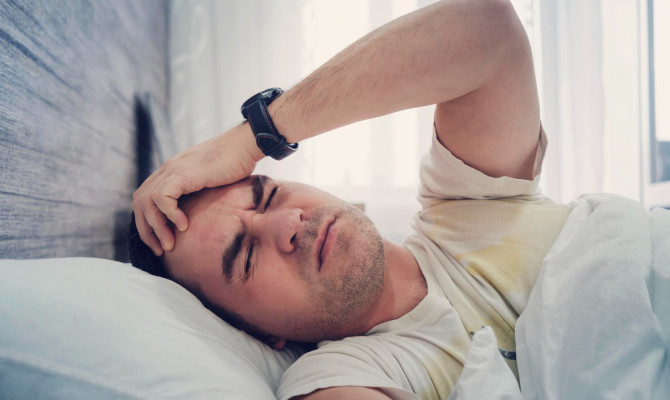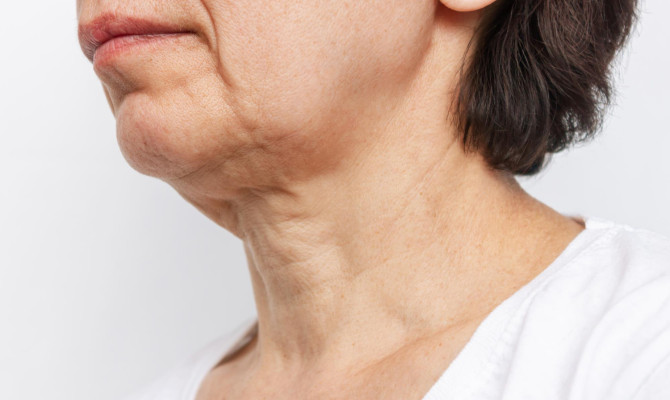Burns : Types and Management

- Burns
- 14 Aug 2023
Overview
Overview
Any time heat, chemicals, sunshine, electricity, or radiation harms the skin tissue, a burn occurs. The majority of burns are accidental.
Burns may cause pain. The term “burn” refers to more than only the burning feeling brought on by this injury. One of the most frequent household injuries, particularly among kids, is burns. Burns is associated with considerable skin injury that results in the death of the injured skin cells. Burns come in various intensities.
When treated at home, minor burns can heal on their own. Extreme burns may pose a threat to one’s life and necessitate emergency hospital treatment. If a burn is not treated, infections and other problems may develop. Depending on the source and severity of the damage, some individuals will recover from burns without experiencing any severe health effects. To avoid complications and death, more severe burns require prompt emergency medical attention.

Risk
Risk factors
- Age – Children are especially susceptible to burns, along with adult women. Adult supervision issues and child abuse are the main risks.
- Gender – Open-fire cooking, using unsafe cookware that might ignite loose garments, and self-directed or interpersonal aggression are other factors that contribute to women having somewhat greater rates of burn fatality than men.
- Socioeconomic factor: Burns are more likely to occur in low- and middle-income countries than in high-income ones. Overcrowding, inadequate safety precautions, and poverty may increase the risk of burns.
- Medical issues, such as epilepsy, peripheral neuropathy, and physical and mental impairments.
- Workplace exposure to chemicals, fire, etc.
- Smoking and excessive alcohol consumption.
- Easy access to substances that can be used as weapons of aggression, such as acid violence attacks and the use of kerosene as a fuel for residential equipment without electricity.
- Insufficient electricity and liquefied petroleum gas safety regulations.
Prevalence
How common is a burn injury?
- Of non-fatal childhood injuries, burns are the fifth most frequent culprit.
- According to the WHO, 180,000 people die from burn injuries each year, which totals 11 million worldwide.
- Each year, about 500,000 People who sustain unintentional burns seek medical attention.
- Each year, more than 100,000 people in India suffer mild to severe burns.
- Children with burn injuries are permanently disabled in 18% of cases and temporarily disabled in 17% of cases in Bangladesh, Colombia, Egypt, and Pakistan.
- Burns is thought to be responsible for 180 000 annual fatalities, with low- and middle-income nations accounting for the majority of these cases. 1prevalence | Researched based study from Who.int
Types
Types of burns
According to their types, burns can be divided as:
Chemical burns
- It can be caused by acid or alkali.
- Since alkali burns liquefy the skin, they often cause deeper penetration into the skin.
- Acid burns have a reduced ability to penetrate because they result in clotting damage.
Thermal burn
- These burns, which are the most frequent variety, are brought on by temperature extremes.
- Most burns are either tiny and superficial, resulting in just local injuries, or wider and deeper, resulting in a systemic reaction.
- Extreme cold can produce frostbite, which can inflict deep tissue harm in addition to skin death.
Electrical burn
- Can be misleading with minor entry and exit wounds, yet there may be serious internal organ damage or accompanying traumatic injuries.
Radiation burns
- External beam radiation therapy, which is used to treat some cancers, frequently causes radiation burns. It could irritate, sting, or cause a reddening of the skin
Based on the extent of damage or severity, burns could be:
- First-degree burns – little burns that only cause the top layer of skin to turn red and become painful, but they do not result in blisters.
- Second-degree burns – both the top and lower layers are affected. Red, swollen, blistered, and painful.
- Third-degree burns – may damage the sweat glands and all three layers of skin. Since they harm nerve endings, the person is more likely to experience pain surrounding the affected area. Burned skin can be leather-like in appearance and be black, white, or red.
Causes
Causes of burns
Burns can be caused by numerous reasons. 86% of burns are caused by thermal injuries, while about 4% are electrical and 3% are chemical. 2Causes of burns | Researched based study from nih.gov
- Heat sources – such as steam, hot liquids, smoking, open fires, and direct contact with hot objects.
- Extreme cold – causes frostbite injuries.
- Chemicals – paint thinners, acids, alkalis, cement, etc.
- Radiation – radiotherapy for the treatment of cancer.
- Electrical shocks can cause burns.
- Sunlight – overexposure to sunlight or UV radiation.
- Physical abuse.
Symptoms
Symptoms
The level or degree of an injury will influence the specific burn symptoms and they may include:
- Visible burns on the head, face, neck, scalp, etc.
- Blisters that are intact or that have ruptured and leaked fluid.
- Pain that is unrelated to the degree of burn.
- Even the most severe burns may not hurt.
- Swelling
- Charred skin that is red, white, or black.
- The skin may peel.
- Skin that is cold and pale
- Weakness
- Lips and nails that are blue
- A decline in attention.
- Coughing
- Mucus with a dark, black stain
- Changes in voice
- Gasping for breath
Diagnosis
Diagnosis
Diagnosing a burn injury may include the following steps:
- History taking – the doctor may ask questions related to the incident by which the injury happened, any history of burns, etc.
- Physical examination – Circulation, airway, and breathing of the patient will be checked. If the burn is very deep, covers more than 10 percent of the total body surface area, is on the face and, foot, or crotch for example, the burn’s severity may be assessed, and a shift to a burn center may be advised.
- Blood test – Full blood count may be performed as a blood test. It is possible to assess serum urea and electrolytes.
- ABG analysis, also known as arterial blood gas analysis, is a test that assesses the oxygen and carbon dioxide levels as well as the pH balance of the blood.
- X-rays, CT scans, and doppler imaging may be suggested to examine the damage to the surrounding structures.
Prevention
Preventative measures
Burns are avoidable, despite them having numerous unintentional causes. A person may take the following steps to reduce the risk of burns:
- When cooking, keep kids out of the kitchen.
- Install a fire extinguisher near or in the kitchen.
- Check the temperature of the bath water before using it.
- Inspect electrical cords, and throw away any exposed wires.
- Store chemicals safely and use gloves whenever possible.
- Use sunscreen daily, and stay out of direct sunlight.
- Routinely empty dryer lint traps.
- Store matches, lighters, and chemicals safely.
- Cover electrical outlets.
- Install and test smoke alarms regularly at home.
- Avoid leaving the stove unattended.
- Use less dangerous fuels and safer cooktops.
- Don’t smoke in bed, and only use child-safe lighters.
- Have medical issues like epilepsy treated.
- Turn down the heat on the hot water faucets.
- For kids’ sleepwear, use fire-resistant materials.
- Keep children away from the kitchen and fireplace at all times.
Complications
Complications associated with burns
While mild injuries may not leave any marks and may heal fully without any consequences, severe and moderate burns may have a wide range of other problems depending on how bad they were and what portion of the body they damaged, such as the following:
- Hypovolemia – low blood volume and dehydration may be seen.
- Hypothermia – critically low body temperature.
- Respiratory issues brought on by breathing in smoke or hot air.
- Hypotension – extremely low blood pressure resulting in a shock.
- Shock – a potentially fatal condition that develops when the body receives insufficient oxygen. 3complications associated with burns | Researched based study from nih.gov
- Arrhythmia – abnormalities in the heart’s rhythm brought on by an electric burn.
- Disfiguring Scars & Contractures – Bone and joint problems may develop during the healing process when the scar tissues shorten and tighten the skin, muscles, or tendons.
- Lifelong consequences – Burn injuries leave behind both psychological and physical scarring that persists throughout one’s life,4complications associated with burns| Researched based study from nih.gov which can harm one’s mental well-being, quality of life, capacity to return to employment, and eventual mortality.
- Infection – when severe may result in amputation or sepsis.
- Organ failure & death.
Management
Management
Minor burns may not need treatment, while moderate to severe burns may need a proper management plan including first aid, medications, physiotherapy, and surgery, as follows:
First Aid
- Take off any clothing that may be in the area that is burning.
- Apply cool running water to the burns to stop the burning process.
- Attempt to put out the flame by letting the patient roll around on the ground, covering them with a blanket, or dousing them with water or other fire-extinguishing substances.
- Use a lot of water to irrigate chemical burns to eliminate or dilute the chemical agent.
- Carry the patient to the closest suitable facility for medical attention while wrapping them in a fresh cloth or sheet.
Medical treatment
- The tissue surrounding the wound will be cleaned and stimulated by the doctor.
- Tetanus shots could be advised as soon as an injury.
- Fluids can be administered intravenously (IV) to ward against organ failure and dehydration.
- Painkillers and anti-anxiety drugs may be useful for treating pain and anxiety brought on by the injury.
- Silver sulfadiazine or bacitracin are two examples of topical drugs for wound healing. They aid in wound healing and infection prevention.
- If there are infection symptoms, IV antibiotics can be necessary.
- Frostbite, for which moist rewarming, potential thrombolysis, and watchful waiting are the preferred treatments. 5Management of burns | Researched based study from nature.com
- Inhalational injuries – high-flow oxygen should be administered while the patient’s carboxyhemoglobin levels are being monitored to rule out carbon monoxide poisoning.
- If carbon monoxide poisoning is confirmed, keep using high-flow oxygen and in some cases, think about hyperbaric oxygen.
- Cyanide poisoning can also occur from smoke inhalation which is treatable with hydroxocobalamin.
Physiotherapy
- You may need to do physiotherapy exercises if the burned area is big, particularly if it covers any joints.
- They can aid in stretching the skin to keep the joints flexible.
- Other workouts to enhance coordination and muscle strength may be used.
Surgical management
- Tracheostomy – if the face or neck are hurt, the throat may swell up and cause breathing problems or a temporary blockage of the windpipe. In these circumstances, the physician might place a tube through the neck to maintain the lungs’ oxygen supply.
- Skin grafts: During surgery, fresh skin is utilized to repair scar tissue left over after an injury. As a temporary fix, a graft can be extracted from a deceased donor.
- Plastic surgery or reconstructive surgery – Burn scars can be made to look better by plastic surgery or reconstructive procedures, and scarred joints can be made more flexible.
Outlook
Outlook
The way a burn injury is handled and the response to it are both very complicated processes. Several people who suffer burns that cover even 90% of their bodies are still alive today thanks to medical improvements. After being released from the hospital, recovery may be hindered by several conditions, such as functional restrictions, obvious scarring or deformity, persistent pain, and post-traumatic stress disorder from the initial injury. 6outlook | Researched based study from nih.gov To significantly enhance burn outcomes both acutely and long-term, new technologies must be included in all stages of the recovery process.
Any feedback on this article?
 This Articles content was accurate
This Articles content was accurate Very Informative Article
Very Informative Article I have a question or a comment
I have a question or a comment
 This article contains inaccurate content
This article contains inaccurate content This article was not helpful
This article was not helpful I have a question or a comment
I have a question or a comment
We appreciate your helpful feedback!
Checkout our social pages
References
-
World Health Organization
Fact sheets | Detail | Burns
-
National Institutes of Health
Burn Evaluation And Management
-
National Institutes of Health
Cardiovascular Dysfunction Following Burn Injury
-
National Institutes of Health
Association Between Burn Injury and Mental Illness among Burn Survivors: A Population-Based, Self-Matched, Longitudinal Cohort Study
-
Nature Journal
Burn injury | Management | watchful waiting
-
National Institutes of Health
Functional outcome after burns: a review | recovery





































